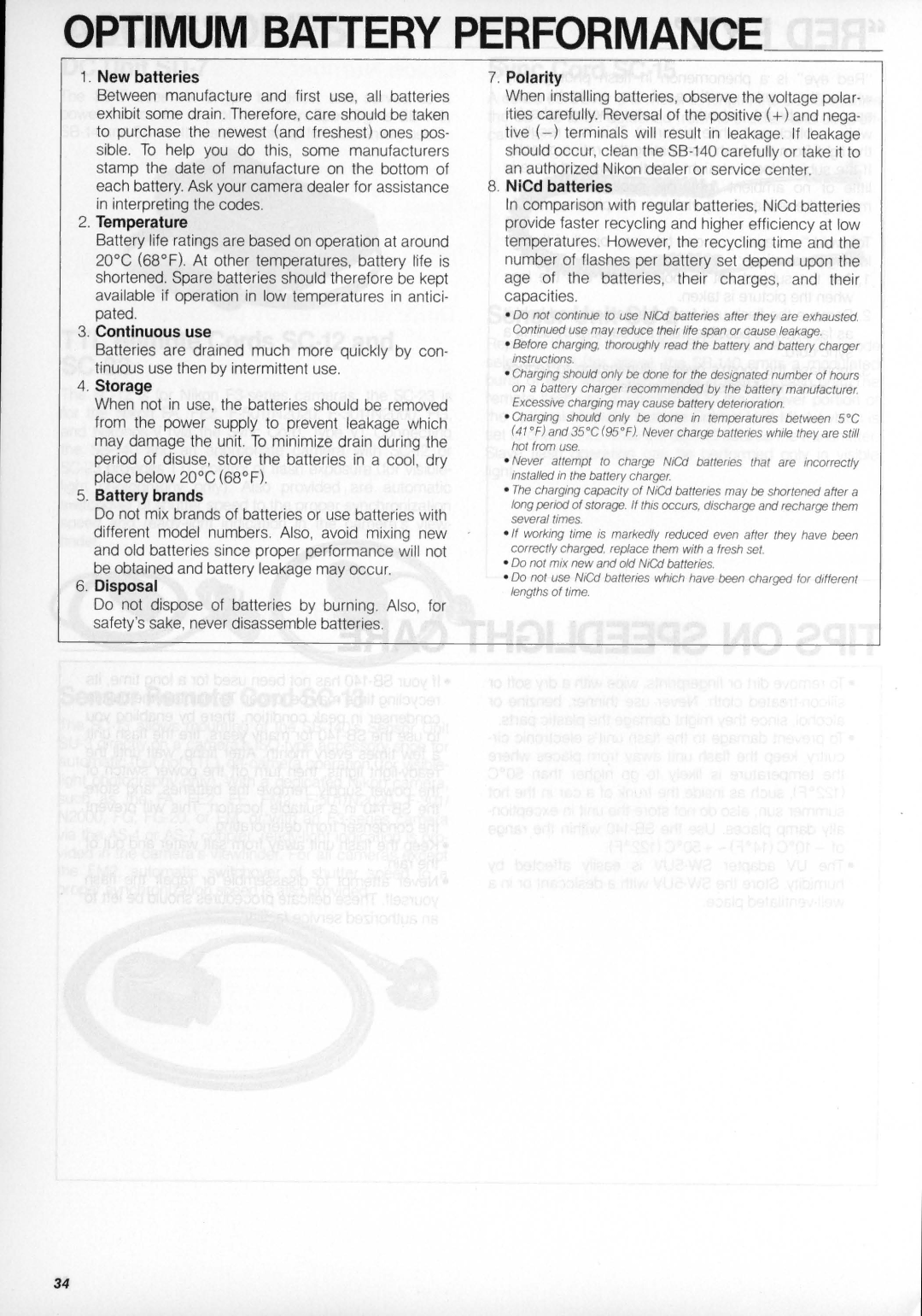
OPTIMUM BATTERY PERFORMANCE
1.New batteries
Between manufacture and first use, all batteries exhibit some drain. Therefore, care should be taken to purchase the newest (and freshest) ones pos- sible. To help you do this , some manufacturers stamp the date of manufacture on the bottom of
each battery. Ask your camera dealer for assistance in interpreting the codes.
2.Temperature
Battery life ratings are based on operation at around 20°C (68°F). At other temperatures, battery life is shortened. Spare batteries should therefore be kept available if operation in low temperatures in antici- pated.
3.Continuous use
Batteries are drained much more quickly by con- tinuous use then by intermittent use.
4.Storage
When not in use, the batteries should be removed from the power supply to prevent leakage which may damage the unit. To minimize drain during the period of disuse, store the batteries in a cool , dry place below 20°C (68°F).
5.Battery brands
Do not mix brands of batteries or use batteries with different model numbers. Also, avoid mixing new and old batteries since proper performance will not be obtained and battery leakage may occur.
6.Disposal
Do not dispose of batteries by burning . Also, for safety's sake, never disassemble batteries .
7.Polarity
When installing batteries, observe the voltage polar- ities carefu lly. Reversal of the positive (+) and nega- tive (- ) terminals will result in leakage . If leakage should occur, clean the SB
8.NiCd batteries
In comparison with regular batteries, NiCd batteries provide faster recycling and higher efficiency at low temperatures. However, the recycling time and the number of flashes per battery set depend upon the
age of the batteries, their charges, and their capacities.
o Do not continue to use NiCd batteries after they are exhausted. Continued use may reduce their life span or cause leakage.
o Before cha rging, thoroughly read the battery and battery charger instructions.
o Charging should only be done for the designated number of hours on a battery charger recommended by the battery manufacturer. Excessive charging may cause battery detefloration.
oCharging should only be done in temperatures between SOC 141°F) and 3SoC 19S0F). Never charge batteries while they are still hot from use.
o Never attempt to charge NiCd batteries that are incorrectly installed in the battery charger.
o The charging capacity of NiCd batteries may be shortened after a long period of storage. If this occurs, discharge and recharge them several times.
o if working time is markedly reduced even after they have been correctly charged, replace them with a fresh set.
o Do not mix new and old NiCd batteries.
•Do not use NiCd batteries which have been charged for different lengths of time.
34
